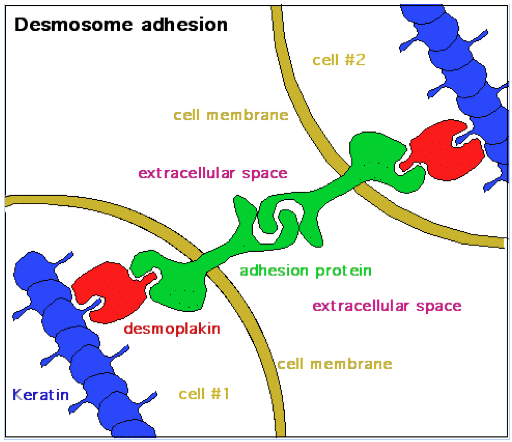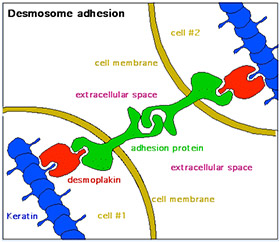An article was published in the Cell magazine by Jun Wu on January 26, 2017. Based on the claims in the article several media outlets, such as National Geographic and Fox News, reported the news that a "Human-pig hybrid is created in a lab." At first, some people who do not examine the details of such news may wrongfully think that "a new species was produced in a lab". For this reason, we have prepared this article to reveal the details of the aforementioned study and the misleading points in the mentioned news.
What was the method and result of the study?
As we know, every living being comes from a group of stem cells formed by the division of a single cell called zygote. While stem cells multiply over time, they begin to differentiate to form various tissues after a while. In this study, human stem cells were injected into the blastocyst of a pig’s embryo at the same development stage with human stem cells. The embryo was then placed in the pig’s uterus and the pregnancy was monitored. At week 4, the pregnancy was terminated to study the pig embryo’s cell structure.

As a result of the research, it was reported that the embryo studied included one human stem cell for every 100 thousand-pig stem cells. But what was more, "the human cells didn't remain in bulk to form an organ, on the contrary, they were scattered in all tissues".
These results were published in many media outlets. However, the interpretation of the results contained some mistakes. Some headlines were used such as, “The Human-Pig Hybrid was Developed in the Laboratory for Organ Transfer!", "The Rise of Chimerism: "Scientists have successfully developed a human-pig hybrid for the first time", which didn't reflect the reality at all. Now let us reveal some of the mistakes on this subject one by one and explain the facts:
What is actually achieved in the hybrid study?
When the article is examined in detail, it will become obvious that the only point in this study that can be called an "innovation" is that the pig embryo remained alive until the 4th gestational week while containing human stem cells. At the 4th week of pregnancy, the embryo is a piece of tissue only a few millimeters in size and the organs can't even be perceived under a microscope. In other words, it's in an early stage of development, and there is no hybrid creature to speak of as the press led people to believe.
The development of the embryo was not healthy
The most important point emerging from the study is that the ratio of human/pig stem cells originally found in the embryo has fallen from high values to very low rates as of 1 in 100 thousand. In other words, human stem cells have undergone much less division when compared with pig stem cells. Therefore, if a longer period of time passed, this ratio would decrease even more in this obviously unhealthy organism. Thus, based on the findings, the experiment shows that with the addition of human stem cells to the pig’s embryo, the development process of the pig has deteriorated. Otherwise, the embryo of the pig would normally develop healthy.
The development slows down
One of the negativities in this study, according to the information disclosed in the article,is the slow development of the pig embryos containing human stem cells, when compared to the development of normal pig embryos. This situation already occurs at the initial stage of development and it is also a sign of a process which leads to death by slowing down the development. Since the foreign cells interfere with the interaction of healthy pig cells, the development process is disturbed.
There is no DNA sharing between the cells of two different species
We already noted that the process carried out in this study was to inject human stem cells into a pig’s embryo when it is at an early stage of development. In other words, in this process, properly functioning pig cells with their own DNA and human stem cells with human DNA have been brought together. This means that there is no change in the initial DNA information. Although the embryo persists living for a while, since no DNA exchange between the two cells have occurred, this cannot be considered as gene integration or gene fusion. Pig cells have remained as pig, while human cells have remained as human.
Human-pig hybrid study does not yield evidence for evolution
The basic claim of evolutionists is that living beings have evolved over time via coincidental mutations and acquired new properties. And so they allege that the different species on earth have emerged through this process. Since Darwinists do not have the fossil or molecular evidence to support this claim, they try to arbitrarily interpret genetic and cellular research to constitute so-called evidence for evolution. Indeed, the same attempt can be seen in this study, too. Because no new genetic information is introduced, this hybrid study can't constitute evidence for evolution.
In multi-celled organisms, full compatibility between cells is essential
The bodies of multicellular organisms require more organization than simply assembled cell populations. As it is known, there are very important structures that allow the coexistence of multi-celled organisms and the organs to remain as a whole. Some of these are "desmosome, tight junction and gap junction" protein complexes. Two adjacent cells are interconnected by at least one of these structures. As seen below, when the proteins of these two cells do not completely match each other, cells will not be able to connect and thus, will not be able to create the tissues essential for organs. The human cells in the pig’s embryo will behave exactly like this, and will not be able to fully partake in the forming of the tissues. So, they will remain as foreign bodies trapped between the tissues of the pig, and even disrupt the structure of the organ where they belong.

In the intercellular organization, remote communication is as important as close communication for the persistence of living being. As in this study, it is not possible for cells of different species to behave in harmony. For example, the only way a hormone signal secreted from the brain can affect the target organism is that the sensor proteins in that organ's cells have key-lock compatibility with the hormone. The information of these proteins is encoded on the DNA for every living being, and is passed down from generation to generation. If the cells belong to different species, this vital harmony will cease, too. The hormone signal secreted by the pig cell will only affect the pig cells in the targeted organ, but this signal will not mean anything for the human cells. Therefore, the human cell inside a pig's organ will not benefit the function of that organ, but contrarily, degenerate it.
Does the study aim at producing organs for organ transplant?
The main objective of the human-pig hybrid study was described as "producing replacement organs for patients who require organ transplants". However, this is not a very realistic approach. Redeveloping an organ for the replacement of a diseased or missing one will, of course, be the ideal treatment; but such a method has not yet been achieved. If the stem cells may be controlled and transformed into an organ, the optimal environment for this will be the individual's own body. This way, the organ will develop without any tissue compatibility problems. If the purpose in such a study is to develop tissues, and once stem cells may be controlled one day, then implementing this process in one's own body is a much more feasible method than studies with pig embryos. Therefore, injecting human cells into pigs to obtain organs is not a very convincing and realistic study.
The claim that "a hybrid organism has been developed for organ transplant" which some headlines showed, is another faulty statement. Because the human cells in the obtained embryos were scattered among the tissues of the pig, a separate organ that only contains human cells did not form. Therefore, no organ that could be used for transplant is existent.
Half-pig-half human (Chimera) dream
The scientists who conducted this study might be having a dream of obtaining a chimera creature found in fairytales like a half-human-half fish, half-human-half horse hero. However, as a result, they only found some human cells scattered in the pig’s embryo where they were forced to co-exist.. As explained above, it is not possible for even individual cells, let alone tissues, to remain alive in another species’ body in the long term. On the contrary, a process like that would damage the entire organism. Even if we were to assume that tissues or even organs could be formed, these would not be compatible for transplantation. Because these supposed organs would contain more pig tissue than human’s. This means the organ would be rejected in minutes.
As known, a person can only have organ transplantation from another human being or cadaver with the best tissue compatibility. However, even with minor differences, tissue rejection occurs occasionally after organ transplants. In order to avoid rejection, immunosuppresive chemotherapy drugs have to be administered to the patient. The only way to completely prevent tissue rejection is to make a 100% compatible organ transplant. This is only possible with the transplant of an organ consisting one's own DNA. Despite the efforts, there is not yet any achievement on this matter.
God creates every living being in its most beautiful form
In the embryonic development process, the number of cells and their interactions with each other are very sensitive. It is currently unknown how this process miraculously works in every pregnancy. This is a miracle because all human beings and other living creatures complete their development successfully -except in cases of illness- at all times. It is clear that unconscious cells do not organize a wonderful process, such as the stem cells differentiating in full harmony over time to form various organs.
As it is clear from the above-mentioned study, every living being is manifested in the most beautiful form with God's art of Creation. An alteration artificially made on a living being will disturb the delicate balance in His Creation. While humans and pigs continue their lives with their flawless qualities, intervening in the balance of cells ruins this magnificent system. All these details are an explicit demonstration of God’s perfect Creation in living things. God is our All-Powerful, Almighty Creator.
Is He Who creates like him who does not create? So will you not pay heed? (Surat an-Nahl, 17)
Sources


